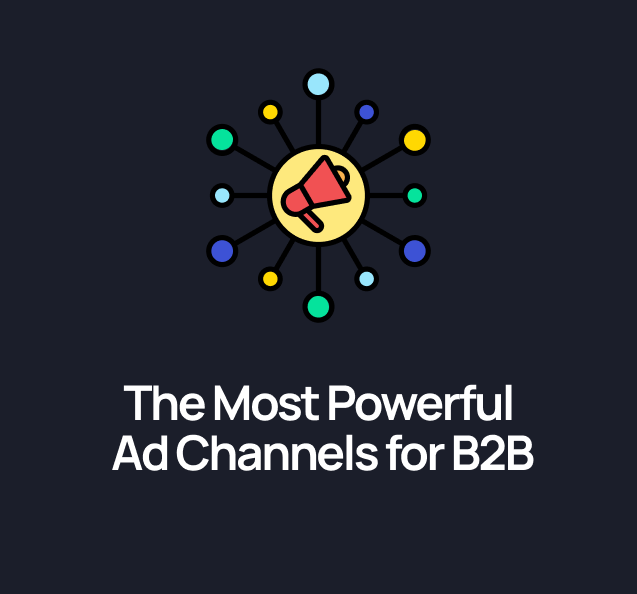As a business owner, marketer, growth lead or other, customer acquisition is a key component of your success. Without customers, your business will not succeed. That’s why having a well-defined customer acquisition strategy is essential for your long-term success.
In this article, we will discuss what a customer acquisition strategy is, how to develop a customer acquisition plan, and how to measure and optimise your customer acquisition activities. By the end of this article, you will have a better understanding of how to use customer acquisition strategies to get your first 100 customers.
What is a Customer Acquisition Strategy?
A customer acquisition strategy is a plan of action designed to attract new customers to your business. It is the process of driving customer acquisition, which involves understanding the customer needs and targeting potential customers who are likely to buy your product or service.
The main goal of a customer acquisition strategy is to generate sales and increase revenue. It focuses on increasing the number of customers who purchase your product or service, as well as their lifetime value.
When it comes to customer acquisition, there are several different strategies that you can use. These strategies include:
- Leveraging content marketing
- Outreach to your ideal customer or business
- Creating a referral program
- Using targeted ads like Google Search Ads
- Developing an SEO strategy to supplement your content marketing
- Building relationships with influencers
By understanding and applying the right customer acquisition strategies, you can maximize your return on investment and ensure that your SaaS business is successful.
Developing Your Customer Acquisition Plan
Once you have identified the strategies that you want to use for customer acquisition, it is important to develop a plan of action. This plan should include the following steps:
- Define your target audience: Before you can start acquiring customers, you need to know who you are targeting. Think carefully about who your ideal customer is and how you can reach them.
- Set goals and objectives: Once you know who you are targeting, you need to set goals for your customer acquisition strategy. These goals should be specific, measurable, and achievable.
- Analyse your competition: It is important to understand what your competitors are doing to acquire customers. By analyzing their strategies, you can identify areas where you can differentiate yourself and stand out from the crowd.
- Identify key metrics: Your customer acquisition strategy should be tracked and measured. Identify the key metrics that you need to track and monitor to measure the success of your strategy.
- Create a timeline: Once you have identified the goals, objectives, and metrics for your customer acquisition strategy, it is important to create a timeline for when each step should be completed. This will help you stay on track and ensure that you are making progress.
Understanding Your Target Audience
Now that you have identified your target audience, it is important to understand their needs and interests. To do this, you need to take a deep dive into the customer’s journey.
Start by researching your target audience. Look at their demographics, interests, and behaviours. This will help you understand their wants and needs. From this, you can start to build a picture of what content resonates with them, and what platforms they're active on.
Next, create buyer personas. These are detailed profiles of your ideal customer. They should include information such as age, gender, job title, and interests. These buyer personas will help you understand your customers better and create messaging that resonates with them.
Finally, create customer journey maps. These maps will provide insights into how your customers interact with your product and website. They will also help you identify areas where you can improve the customer experience.
Crafting Your Messaging for Your Target Audience
Now that you have identified your target audience and have created a plan of action, it is time to create messaging that resonates with them.
Start by creating a customer value proposition. This is the statement that outlines the benefits that your product or service offers to your customers. It should be clear, concise, and compelling.
Next, create a messaging framework. This will help you craft targeted messaging for each stage of the customer journey. Make sure to keep your messaging consistent across all of your channels.
Then, create a content plan. This will help you identify the content that you need to create to engage your target audience. This can include blog posts, videos, webinars, and social media posts.
Finally, create an email marketing strategy. This will help you nurture leads and convert them into customers.
Implementing Your Customer Acquisition Strategy
Once you have identified your target audience and created a plan of action, it is time to start implementing your customer acquisition strategy.
- Set up tracking and measurement tools. These tools will help you measure the success of your customer acquisition efforts and identify areas for improvement.
- Create content that resonates with your target audience. This could include blog posts, videos, webinars, and social media posts. Make sure to optimise your content for search engines and use the right keywords.
- Create an automated sales funnel. This will help you capture leads, nurture them, and convert them into customers.
- Create a referral program. This can be a great way to acquire new customers and increase loyalty.
- Once you have reached product-market fit use targeted ads like Google to reach potential customers.
Setting Up Your Sales Funnel
Once you have identified your target audience and created your messaging, it is time to set up your sales funnel.
A sales funnel is a process that helps you capture leads, nurture them, and convert them into customers. The most common stages of a sales funnel are:
- Attract - creating content that attracts potential customers and builds awareness of your product or service.
- Engage - engaging with potential customers and building relationships.
- Convert - converting potential customers into actual customers.
- Retain - nurturing customers and building loyalty.
Once you have identified the stages of your sales funnel, it is important to create a plan for each stage. This plan should include the content, messaging, and actions that you need to take to move potential customers through the funnel.
Measuring Your Customer Acquisition Strategy Results
Once you have implemented your customer acquisition strategy, it is important to measure the results. This will help you determine what is working and what needs to be improved.
The most important metrics to measure are customer acquisition cost (CAC) and customer lifetime value (CLV). CAC is the total cost of acquiring a customer. CLV is the total revenue generated by a customer over their lifetime.
It is also important to track engagement metrics such as website visits, blog views, and email open rates. This will help you understand how customers are interacting with your business and what content is resonating with them.
Finally, track your customer feedback. This will help you understand the customer experience and identify areas for improvement.
Tracking Your Results and Optimising
Once you have implemented your customer acquisition strategy and started to measure the results, it is important to track and optimise your efforts.
Start by tracking the metrics that you identified in your plan. This will help you understand how your customer acquisition efforts are performing.
Then, identify areas for improvement. This could include creating more targeted content, optimising your sales funnel, or improving your customer service.
Finally, test and optimise. This will help you identify the strategies that are working and the ones that need to be improved.
Conclusion
Customer acquisition is essential for SaaS businesses. To acquire customers, you need to have a well-defined customer acquisition strategy. This strategy should include understanding your target audience, creating content that resonates with them, setting up a sales funnel, and measuring and optimising your efforts.
By following the steps outlined in this article, you can unlock your customer acquisition strategy and get your first 100 SaaS users. With the right customer acquisition strategy, you can maximise your return on investment and ensure the long-term success of your business.

.svg)








.svg)
